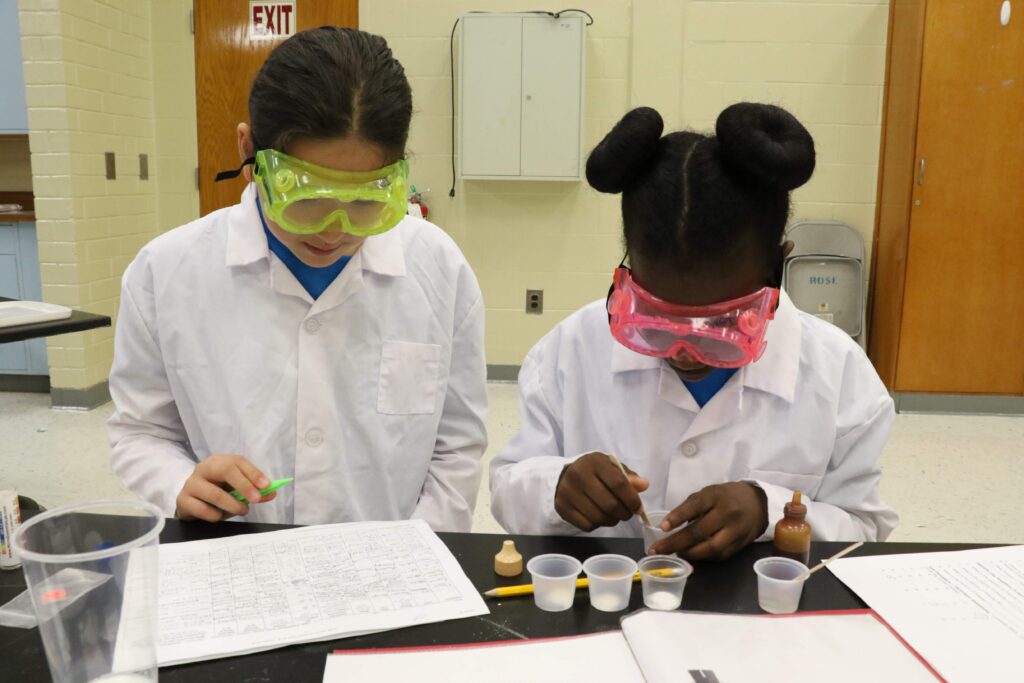Super Sleuths
Division: A – Elementary
NC Essential Standards Alignment: PS.3.1, PS.5.1, Science as Inquiry
SEP Practices: Obtaining, Evaluating, and Communicating Information; Planning and Carrying Out Investigations
Description:
Given a mystery scenario, evidence, and a list of possible suspects, teams will be expected to perform a series of tests to draw specific conclusions about the scenario and suspects. The test results, along with other evidence, will be used to solve the mystery of the scenario.
Materials:
Teams must bring something to write with.
- Teams may bring only specified items in the rules and goggles. No other items are allowed. The event supervisors will check the kits, and confiscate non-allowed items. Students not bringing these items will be at a disadvantage.
Students must wear the following or they cannot participate:
-
-
- Closed-toed shoes
- Safety goggles (indirect vent goggles)
- Long hair must be tied back
- Optional: aprons, gloves, and lab coats
-
Students who unsafely remove their safety goggles or are observed handling any of the material or equipment in a hazardous/unsafe manner (e.g., tasting chemicals or flushing solids down a drain) will be disqualified from the event.
Scoring:
- The team with the highest score wins. Time will not be used for scoring. The score will be composed of the following elements (percentages given are approximate):
- Analysis of chemical evidence 50%, analysis of physical evidence 30%, and analysis of the crime 20%.
- Tiebreaker: The highest score on the chemical evidence analysis will break ties.
- A 10% penalty may be given if the area is not cleaned up as designated.
FAQs:
When I went to purchase Sodium Acetate on Amazon, I noticed two options, anhydrous sodium acetate and sodium acetate trihydrate. Which type might be used in the event?
For most of the tests that the students will be doing, it doesn’t matter which one. Either form will give the same results for the tests that are the most useful for identifying sodium acetate. However, the one that we use for most of our labs is the Sodium Acetate, Anhydrous.
Common Mistakes:
The biggest problem elementary teams have is time management. Be prepared to divide and conquer parts of the test, or you may not get done.
Event Resources:
Elementary Safety
Super Sleuths Powder Analysis Chart
General Sites on Forensics
https://www.soinc.org/science-crime-busters-notes
Links to forensic activities for students
Media:

